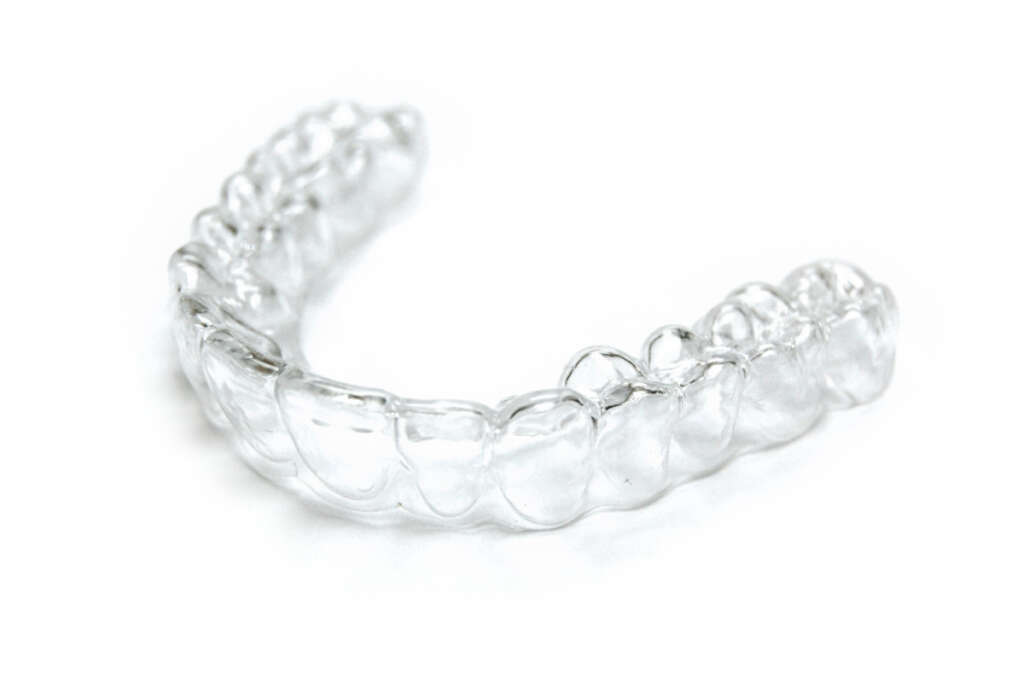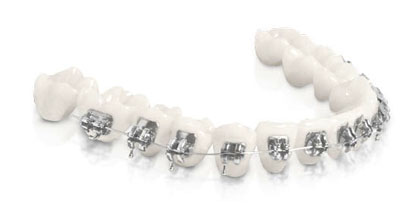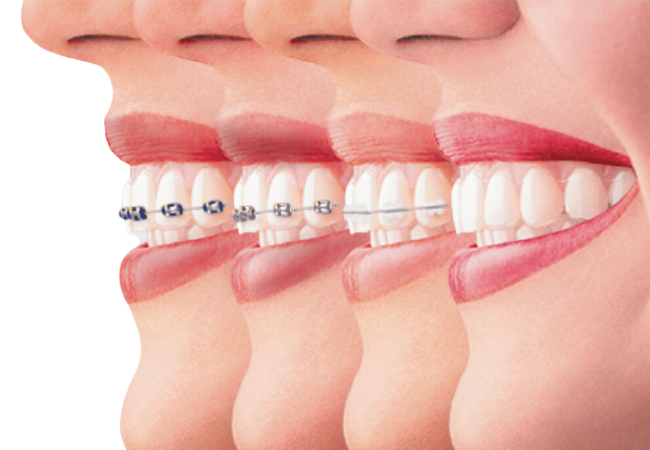ORTHODONTICS
Orthodontics in Puerto de la Cruz, Tenerife
ORTHODONTICS
The fact that the teeth are not in the right position can cause tooth loss, periodontal disease, wear on the edges or occlusal surfaces, pain in the jaw joint, fractures, digestive disorders, etc.
Thanks to orthodontics, overcrowding, poor dental position or bite problems are corrected and, above all, not only the functionality but also the beauty of the smile is restored.
The different types of orthodontics take advantage of the continuous regeneration of bone and tissue to correct the position of the teeth. By applying prolonged and controlled force, the teeth are moved to obtain a more aesthetic and, above all, more functional smile.

Types of orthodontics
In general terms, we can speak of fixed orthodontics and removable orthodontics.
1. Fixed orthodontics
Brackets are the most traditional method and also the most used in children and adolescents because they do not require a lot of collaboration from the patient, as well as being normally the least expensive.
There are different types of brackets.
Metal or conventional brackets.
Aesthetic brackets. Made of materials that make them less visible.
Self-ligating brackets such as Damon orthodontics.
2. Removable orthodontics
Children’s orthodontics. These are braces made of acrylic materials that are attached to the molars by means of hooks. They are used especially in children around 7 years of age.
Invisible orthodontics. This consists of aligners or splints, made of a transparent material. With this type of orthodontics you hardly notice that you are wearing them and you can also take them off for short periods of time. Do you have to attend a wedding? take them off. Dental hygiene is also much easier as we can remove the splints to do it. It’s also better for eating.

Reasons for orthodontic treatment
Many of the patients who come to the surgery seek to solve an aesthetic problem with orthodontic treatment, but there are health reasons, some of them very important, which normally make this type of treatment advisable.
1. To improve the bite.
It allows the teeth to carry out their main function, chewing, correctly, so that we can eat more healthily by improving digestion.
We will not overload the jaw joint and related structures. We will avoid headaches, bad posture, pain in the TMJ, contractures in the head and neck area and …..
2. Fewer cavities and healthier gums
Crowded and misaligned teeth are more difficult to clean and food accumulates in gaps and hard-to-reach spaces. Good alignment will make our daily cleaning more effective and therefore our teeth and gums will be healthier.
3. Dental wear is reduced
Poorly aligned teeth that protrude and do not fit together properly wear down prematurely. Orthodontics also helps us to avoid this problem.
4. Improves self-esteem
This is not a minor or frivolous matter. A healthy and aesthetically pleasing mouth helps us to relate better to others and gives us confidence, raising our self-esteem, reducing stress, encouraging us to smile and sing.

Frequently asked questions about orthodontics
In our clinic, Artedental, in Puerto de la Cruz, we have Dr. Sonsoles Pérez Tamajón, an orthodontist with more than 25 years of experience in this speciality. She is the specialist in orthodontics who will best resolve any doubts you may have about your particular case, so don’t hesitate to make an appointment and clear them all up.
It will depend on each case and the specific needs of each patient.
There are people for whom aesthetics during treatment is very important, for example because of their work, or so that their phonation or speed is not modified. …. Each treatment has different characteristics and the orthodontist is the appropriate specialist to guide us on the suitability of one or more treatments from which we can then decide.
Nowadays, orthodontic treatments can be started at almost any age over 6 years old. It is never too late, as long as you have teeth, of course (take care of them☺), and the desire to improve the aesthetics, health and functionality of your mouth.
No, orthodontics is not painful. You may feel pressure on your teeth, especially in the first few days and after check-ups, or when you change your braces, because the teeth move precisely by putting a little pressure on them.
You may also experience minor discomfort, chafing and canker sores when you wear braces, due to the metal parts rubbing against the tissues in your mouth. These small problems are temporary and the orthodontist will give you strategies to alleviate or eliminate them.
Yes, it is possible to have orthodontics even if some teeth are missing. The orthodontist will tell us if we can close the gap by aligning the teeth or if we will need a dental implant to fill it and prevent the teeth from moving into the gap in the future.
Yes, but bearing in mind that the implants will not move out of place, only the rest of the teeth. The orthodontist will take this into account when designing the movements and may use the implant as an anchorage point.
In this case, it will depend on the type of braces you wear. With removable braces, for example invisible invisalign braces, you can eat the same as if you were not wearing them, because you remove them when you eat and clean your teeth.
If you wear braces or lingual braces you have to be careful with hard and sticky foods, fundamentally, and take great care with dental hygiene.
There is no problem if you are pregnant and wear orthodontics. However, it is not the best time to do it because it makes it a little more complicated during those months when you will have so many things to do and so many medical visits and a birth that may mean you miss your check-ups….Better to start earlier or later.
